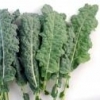Nicotinamide Riboside Maintains Cell Survival and DNA Integrity During Acute Surges in Oxidative and Hemodynamic Aortic Stress
Alanna Watson, Sina Ghoreishi, Krista Hawrylyshyn, Zengxuan Nong, Hao Yin, Caroline O’Neil, J. Geoffrey Pickering
Atherosclerosis Supplements. June 2018. Volume 32, Pages 113–114
International Symposiium on Atherosclerosis (ISA) Abstract P3.091
DOI: https://doi.org/10.1...sup.2018.04.350
... [Human endothelial and smooth muscle cells (ECs and SMCs)] subjected to acute oxidative stress by H2O2 displayed 86% and 55% declines in NAD+ content, respectively, with corresponding losses in cell viability. Inhibiting PARP1 activity blunted NAD+ decline [by preventing its consumption by PARP1] and also reduced cell death. However, this was at the cost of increasing DNA strand breaks, by 33% and 25%.
Importantly, supplementation with NR [in vitro] increased vascular cell NAD+ content and reduced the PARP1-mediated, NAD+-depletion-associated cell death, but without accumulating DNA damage.
Infusion of [1.44 mg/kg/day] Ang II in mice [which increases blood pressure and arterial stiffness] resulted in early EC and SMC death (prevalence of 43.4% and 12.1% on day 3). This was associated with loss of DNA integrity in both ECs and SMCs. Strikingly, supplementing mice with [400 mg/kg/day] oral NR for one week prior to and during acute Ang II infusion abrogated EC and SMC death and DNA strand breakage.
Conclusions: Administration of NR buffers NAD+ levels in aortic ECs and SMCs subjected to high oxidative stress, and protects against acute cell death and DNA damage. By maintaining NAD+ reserves, NR supplementation may be an important cytoprotective strategy for acute insults that predispose to aortic disease.
This is a very high dose of antiotensin II (a standard protocol designed to mimic garden-variety hypertension with chronic low-dose angiotensin II (Ang II) involves gradual infusion of 150-600 nanograms per kg per minute, which means less than 1 mg/kg a day in total — and it's not clear how quickly they infused the 1.44 mg/kg/day here), so it's not clear if this is an effect that would actually be drawn upon in the real world (let alone in nonhypertensive people), but it's certainly interesting and merits further study.
This somewhat complements the ambiguous Colorado NR trial (here and here), which suggested (in an exploratory post hoc subgroup analysis, and contrary to the prior Elysium Basis trial) that NR might lower BP and arterial stiffness in prehypertensive subjects.
Edited by Michael, 12 June 2018 - 03:52 PM.































 This topic is locked
This topic is locked

















